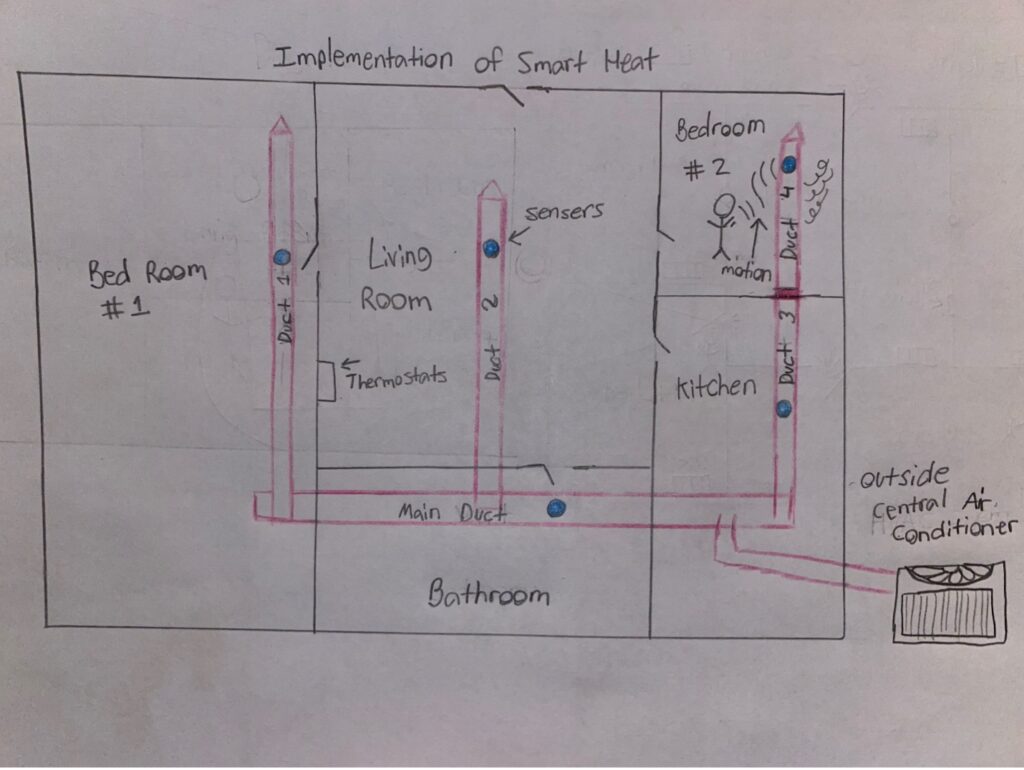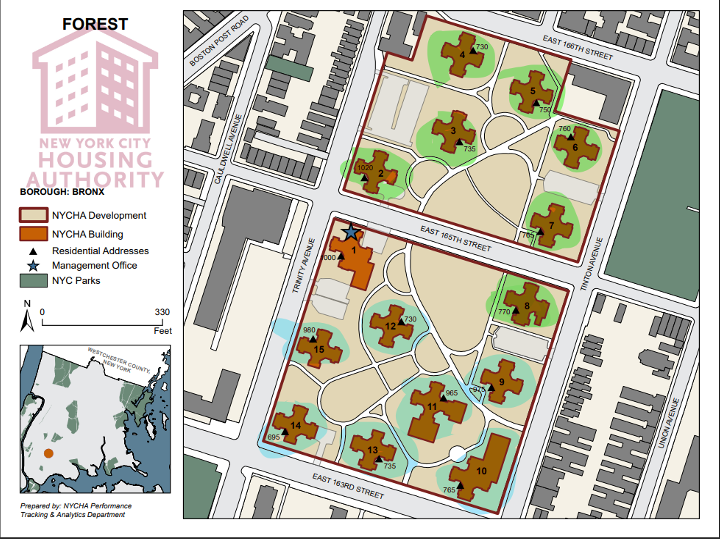There are multiple parts in developing the HeatSmart, to develop thermostats that help reduce energy usage. Two computer scientists and two mechanical engineers could be very qualified to make a smart thermostat. The computer scientists can build the software for the thermostat and create the algorithms within it that will manage its functions, and the mechanical engineers can apply their knowledge of machinery to create the physical thermostat itself while ensuring it has the most efficient features, that are compatible with heating, ventilation, and air conditioning system (HVAC). However, an electrical engineer would be needed for the development of the HeatSmart, since there are circuits involved and have knowledge of sensors. Which would be an additional factor in the cost, $45-60 an hour and $100,420 annually (U.S. Bureau Of Labor Statistics, 2023, n.p.). These are engineers needed for the task, since there are multiple buildings that must have these smart thermostats installed, for the testing phase.
Firstly, mechanical engineers have a deep understanding of thermodynamics and heat transfer. This knowledge can be applied to developing a thermostat that maximizes energy efficiency. According to a study by the National Institute of Standards and Technology (NIST), heating and cooling account for approximately 43% of residential energy consumption in the United States (NIST, 2023, n.p.). They can use their expertise to design a thermostat that can accurately measure temperature changes and control heating and cooling systems accordingly. Mechanical engineers can also suggest ways to minimize heat loss, such as improving insulation, and optimize the use of renewable energy sources.
Secondly, computer scientists have the expertise to develop software and algorithms that can optimize temperature control and energy usage. For example, a team of computer scientists at Carnegie Mellon University developed a machine learning algorithm that adjusts thermostat settings based on occupancy patterns, resulting in energy savings of up to 25% (Carnegie Mellon University, 2023, n.p.). They can program the thermostat to learn the user’s preferences and adjust temperature settings accordingly. They can also develop machine learning algorithms that can prodigy temperature changes based on weather forecasts and adjust the thermostat settings accordingly. Additionally, computer scientists can develop a user-friendly interface that enables users to easily adjust the thermostat settings and monitor energy consumption.
Furthermore, collaboration between mechanical engineers and computer scientists can result in a more efficient and effective product. According to a study by the American Society of Mechanical Engineers (ASME), interdisciplinary collaboration can lead to innovation and the development of solutions that cannot be achieved by a single discipline. The combination of mechanical and computational concepts can result in a thermostat that is both energy-efficient and simple to use. The team can collaborate to create a product that is both environmentally sustainable and meets consumer needs.
2.1 Requirements
i. Personal Requirements
- Mechanical engineering: Knowledge of thermodynamics, heat transfer, and HVAC systems is essential for designing a physical thermostat that accurately measures temperature changes and controls heating and cooling systems while maximizing energy efficiency.
- Computer science: Programming skills and knowledge of machine learning algorithms are necessary for developing the software that powers the Heat Smart thermostat, including the algorithms that manage its functions and optimize temperature control and energy usage.
- Electrical engineering: Familiarity with circuits and sensors is required for the development of our Heat Smart thermostat, as sensors are used to detect temperature changes and occupancy.
ii. Other Requirements
- Technical knowledge: Building a smart thermostat requires good understanding of electronics, programming, and wireless communication protocols such as Wi-Fi or Bluetooth.
- Hardware components: A smart thermostat requires hardware components such as a microcontroller, sensors, wireless modules, and actuators for controlling the HVAC system.
- Software development: Developing software for a smart thermostat involves programming the microcontroller, creating a user interface, and integrating with cloud-based services.
- Power consumption: A smart thermostat must be energy-efficient to avoid draining the battery or overloading the HVAC system.
- Compatibility: A smart thermostat should be compatible with a wide range of HVAC systems, including central air conditioning, heating, and ventilation systems.
- Security: A smart thermostat must be secure to prevent unauthorized access or tampering.
- User experience: The smart thermostat should have an intuitive and easy-to-use interface for controlling the HVAC system and adjusting settings.
- Testing and certification: A smart thermostat must undergo rigorous testing and certification to ensure it meets industry standards and regulations, such as Energy Star certification.
2.2 Architectural Design

The production of the smart thermostat would require the buildings to have HVAC systems, which the project buildings we are working on in the Bronx are in the process of installing HVAC systems according to the efforts of Vlada Kenniff Senior Vice President for Sustainability in NYCHA’s Asset (NYCHA. 2023, n.p.). The air will travel above the ceiling ducts and instead of using vents we will use linear diffusers, to get better circulation and better view of motion by sensors, through higher elevation. The ducts are also divided into different sections of the rooms, to only blow air in certain rooms, when detecting motion, one is in. As seen in Figure 1, bedroom 2 has a person walking in and the motion sensors pick up this movement, admitting heat that will cause it to trigger the thermostat to send air flow through the specific duct for specific room.


As seen in Figure 2, the rectangular slot gets connected to the ducts of HVAC system that allow it to blow air from above instead of the bottom. Figure 3 shows how linear diffusers look in houses, which doesn’t take up space like an air conditioner or not worrying accidentally covering vents, that are usually on the floor.
2.3 Mechanisms and Processes: A Comprehensive Explanation
These smart thermostats would be connected to HVAC system which is a cooling and heating unit that is powered by electricity. Thermostat’s purpose is to be a switch to the different wires for either ventilation, heating, or cooling. However, with the HeatSmart, an addition of wires will be implemented to connect the thermostat and the multiple motion sensors placed in each room of the house, placed by the engineering team. This could be seen in figure 4, the purple wire is connected to the thermostat and as it senses a person enter a room, it will send a single to thermostat and make the air flow go to the specific duct. By having the thermostat weirdly connected with the motion sensor, it allows it to switch between different ducts and eventually send air to the pacific room. It would only activate that duct in that room for either heating or cooling and not the whole house.

The Bi-metallic strip is what provides the switch between wires in a scenery thermostat, from hot to cold. If the thermostat is switched to heat the bimetallic will go up and become an open circuit conduction and heating is turned on in the house. If the thermostat is stopped or cooled down, then the bimetallic strip would be back to electrical contact and returned to its electrical connection that allows for cool air to come in.

While the Passive Infrared Sensor (PIR) motion detector sensor will be in the diffusers since it is small to fit but also be able to follow the motion of the person, providing signals to the thermostat. It’s able to detect the physical movement of people by looking at changes in infrared energy that are caused by moments of humans and pets (Eletroniscomp, 2023, n.p.).
The combination of a bimetallic strip and PIR motion detector can allow the HeatSmart thermostat to adjust temperature settings based on whether someone is in the room or not. If the PIR sensor detects movement, it signals to the thermostat to adjust the temperature to the desired level.
In this way, the bimetallic strip and PIR motion detector work together to improve the energy efficiency of the HeatSmart thermostat. By detecting whether someone is present or not, the thermostat can avoid wasting energy by heating or cooling empty room.
2.4 Testing

The Forest Housing Project in the Bronx has a total of fifteen buildings. With the permission of the New York City Housing Authority, we will use 14 of the 15 buildings to test out the smart thermostat. Buildings 2 – 8 (highlighted in green) will be used as the experimental group for the smart thermostat. While buildings 9 – 15 (highlighted in blue) will be the control group, to see results on how much energy these smart thermostats save in energy.


